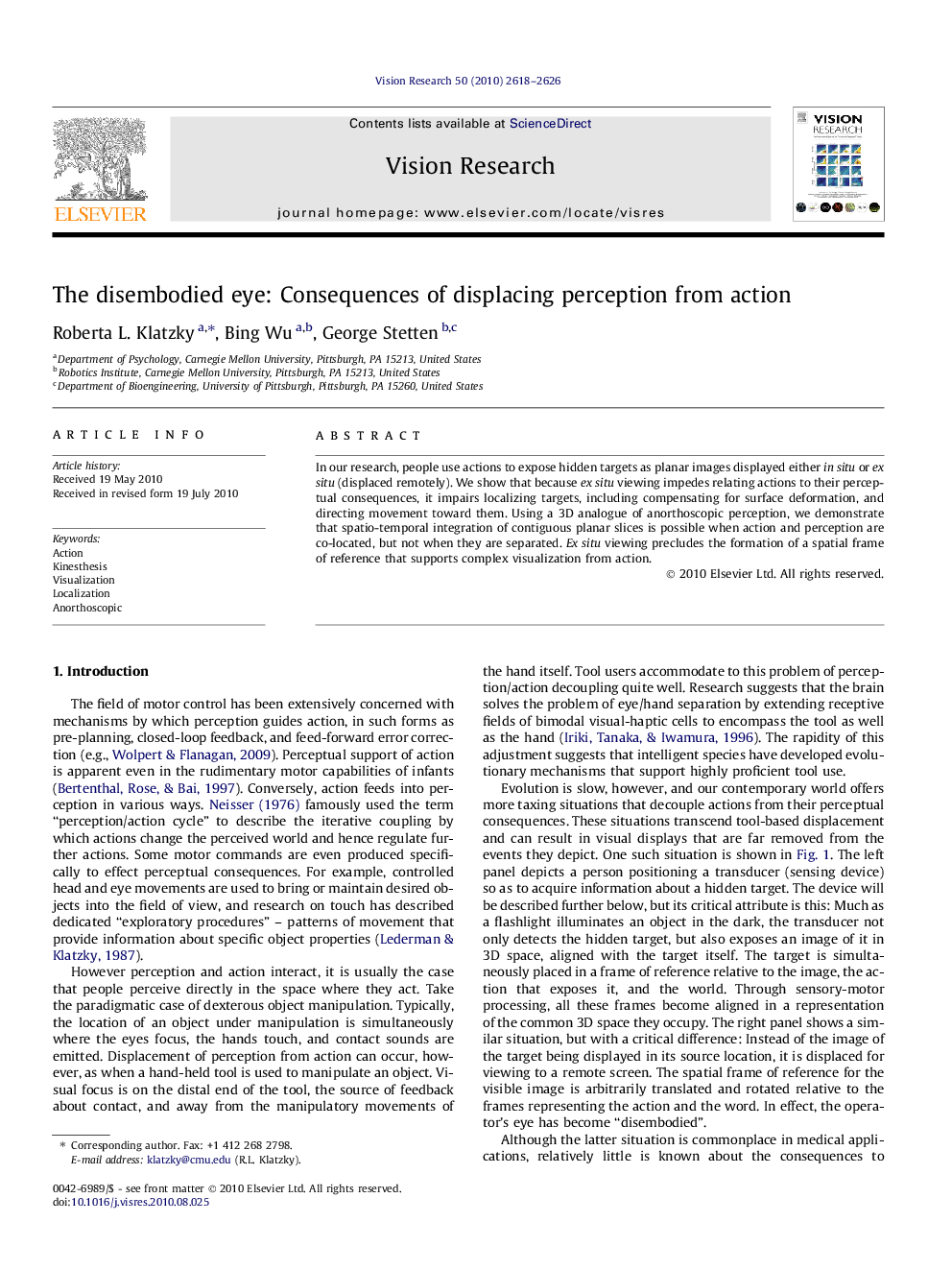| Article ID | Journal | Published Year | Pages | File Type |
|---|---|---|---|---|
| 4034215 | Vision Research | 2010 | 9 Pages |
In our research, people use actions to expose hidden targets as planar images displayed either in situ or ex situ (displaced remotely). We show that because ex situ viewing impedes relating actions to their perceptual consequences, it impairs localizing targets, including compensating for surface deformation, and directing movement toward them. Using a 3D analogue of anorthoscopic perception, we demonstrate that spatio-temporal integration of contiguous planar slices is possible when action and perception are co-located, but not when they are separated. Ex situ viewing precludes the formation of a spatial frame of reference that supports complex visualization from action.
Research highlights► Compares in situ (co-located with action) and ex situ (remote) 3D spatial displays. ► In situ visualization facilitates target localization, even under deformable surfaces. ► 3D “anorthoscopic perception”: whole objects perceived from in situ cross sections. ► In situ display promotes 3D visualization of complex spatial data.
